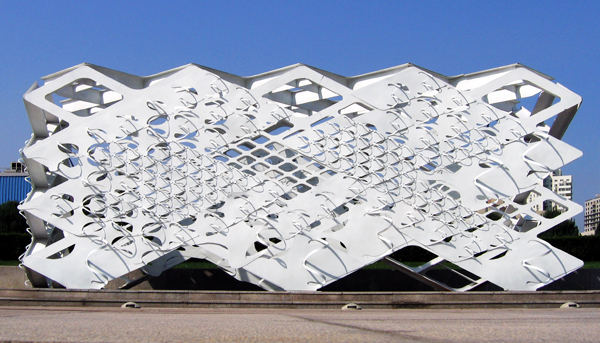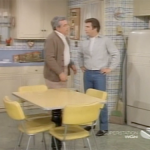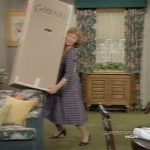INTERIOR TV

text by Francesca Romana Moretti
In an unusual experiment, we can look at TV series as “archives” of the era in which they were produced. Every show tells a story in its own way about the world, the people and the habits of a particular time. They can help us understand how people lived, what their houses were like, and through images of their interiors and their gathering spots we get a new perspective on how society has evolved and will continue to do so over the years.
Imagine extracting a few representative images from some of the most popular shows of the past and present. Let’s place them in sequence like a film, each frame a different image. What do we get? Simple. A timelime that tells us how our ways of living and thinking about the world have evolved over the last 50 years, with plenty of nostalgic feelings on the side.
First we see families living in middle class homes, cozy cottages or apartments that express their serenity. Their unity as a family is typical of American TV shows in the 80’s. In the second stage we observe huge houses, maybe on the beach, or true “manor houses” in exclusive areas of the city. We see the great manors of Dallas and Dinasty, external expressions of power and money, magnificent villas with a very “baroque” and redundant interior design with a wealth of details and objects in order to strengthen ”the tribute to the power” of the owner. We then approach the seaside villa of Magnum PI, minimalist in design and attention, and later get to the Los Angeles villas shown on The Fresh Prince of Bel-Air or Beverly Hills 90210.
Our journey is introduced by one of the most popular TV-series of the last thirty years, Happy Days. The show was produced in the 70’s but is a fresco of a 50’s dreamer and an optimistic America. The Cunningham’s house is the typical American house with all the “reassuring” elements in its place: the lawn, the picket fence, flowers in the windows, a rocking chair on the porch.
The design is very traditional of the 50-60’s, however, it’s a “family” design that does not show off. Inside the house we find the typical American kitchen with cream colored wood cabinets and light blue counter tops, an alternate back door entrance, a large living room with a fireplace built into the wall, as well as various libraries with stairs that lead upstairs where the bedrooms are arranged. The couch and curtains are made of tapestries with floral motifs. The color themes mainly include green, antique pink and brown. Carpet covers the floors of every room, as inevitably as wallpaper covers all the walls, with a solid color for the hallways and the living room and various patterns in the other rooms.
Reassuring also through its geographical location, Happy Days isn’t set in a chaotic metropolis, but instead in the small town of a human scale: Milwaukee, Wisconsin. Years pass and we witness an evolution in the family’s company and home through America as portrayed during the 60-70’s hippy revolution. Design begins to be bolder; it abandons traditional ways to venture instead into new materials, colors and shapes. Homogeneity is avoided; there’s a strong momentum highlighted by matching geometric and chromatic grating. The trend of these years can be described as “new futurism”.
The number of shows and genres increases as we pass through the 70’s and the sterile and sad homes that are depicted in the shows of the various private investigators (Kojak, Colombo and similar) and the most popular ”carpeted” case as in I Dream of Jeannie. We get to the nostalgic 80’s, now the shows are uncountable, we are in the booming years of the “all is well and we are all happy and if we’re not and at least pretend we are”.
The family (usually wealthy and large) is hailed again to become the star of numerous TV series: Eight is Enough, Growing Pains, The Cosby Show, The Jeffersons, Family Ties, Different Strokes and so on. The houses are large and well appointed. The sofa or the kitchen table became the focal points, symbols of unity that should exist at all costs.
The 80’s were decidedly cosmopolitan; they centered on the “cult” of the city and its hectic rhythms. Living in the big city is glamorous and becomes a symbol of emancipation and ambition. The city straddles the boom, grows, changes shape, the residential districts create their own space and move away from the center, which in turn becomes more and more “specialized” and directional. Mr. and Mrs. Jefferson inhabit one of the first apartment buildings in the TV world of the 80’s. With them, social issues are beginning to emerge: George and Lizzie moved into an elegant apartment in the Upper East Side of Manhattan and must be integrated into the social fabric of New York’s middle class. The couple represents the meeting point of two different cultures, the poor Harlem and the posh city center.
The metropolis, which only begins to surface in the TV series of the 80’s, gains increasing importance in the next decade. The shows of the 90’s are “emancipated”; the family themes begin to be overshadowed in favor of friends and aggregations. Beverly Hills 90210 and Friends are representative of this period. First, Beverly Hills’ luxurious villas are put to the side to make space for the reassuring Walsh home. Then, the apartment shared by guys and girls in a metropolitan building in the vital area of Greenwich Village in New York becomes the protagonist. The house therefore loses the significance it had until now. The different shows broaden your horizons, forcing you to leave the four walls and begin to explore situations set in the city, which will be the star of the TV series of the new millennium.
In the first 10 years of the new millennium the concepts of new TV series were totally transformed and with them the issues discussed. Today we deal with social issues, supernatural themes, disruption and extreme investigations. Because of its nature, the house has lost the role it had in previous years. (It was the ideal set for many sitcoms like Will & Grace, Big Bang Theory, Dharma and Greg etc.)
The real star of this year is the city (and its neighborhoods), which is no longer just “nominated” but comes to life and is sympathetic to the events of the series. To further distinguish itself, it appears in the titles of various series: CSI: Las Vegas, New York, Miami, Law & Order: Los Angeles, Paris.) The New York of Sex & The City and the neighborhood of Wisteria Lane in Desperate Housewives (where the typical prefabricated houses return with porches and rocking chairs, the externalization of a society where harmony dominates and where nothing ever happens, apparently!) come to life. Interior design now follows the requirements of various TV series’ protagonists in recent years. These range from a minimalist urban kitsch to glamorous or attentive to detail and elegance and up to the trends dictated by the Ikea style.
Our journey through the TV series ends here. We passed through rooms, homes, neighborhoods, towns and cities and saw how life has changed, as we have suffered from “metropolization”. The pace of life today can take us anywhere at any time. Fewer experiences take place in our homes; instead, the city and its bustle are dominant in our lives. We have reached a point where our home is not longer a mirror of ourselves, but of our city.
Related Posts :
Category: Article
Views: 1973 Likes: 1
Tags: big bang theory , happy days , interior , magnum p i , serie tv , telefilm , tv
Comments:
Info:
Info:
Title: INTERIOR TV
Time: 15 marzo 2011
Category: Article
Views: 1973 Likes: 1
Tags: big bang theory , happy days , interior , magnum p i , serie tv , telefilm , tv











